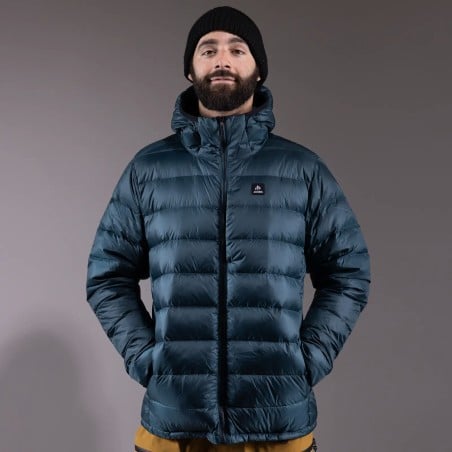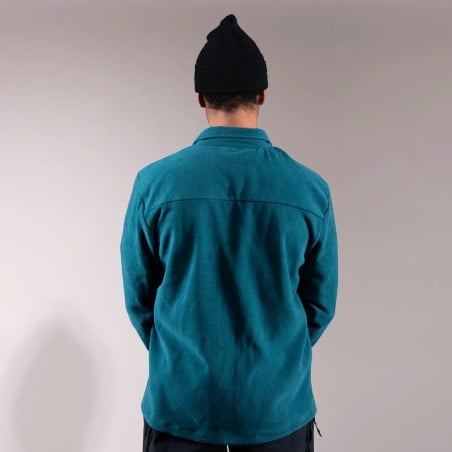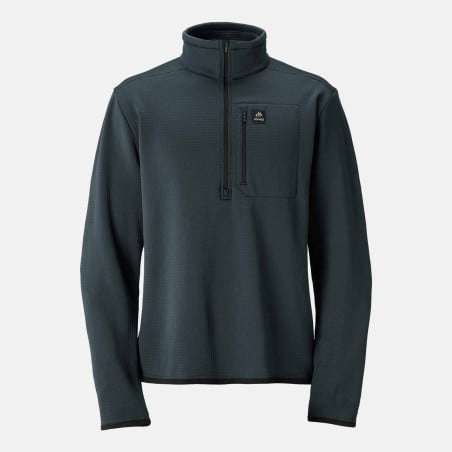Gear 101
Layering 101
How to choose the best layers for variable mountain weather
What you are wearing when you leave the resort parking lot or the backcountry trailhead can make or break your mountain experience. If you want to make the most out of every day you get to shred, you must pay attention to the clothing you wear and dress according to the current weather, your intended mountain objectives, and potential changes in the weather.
Think about the clothing you wear in the mountains as a layering system. Every layer you put on your body should have a purpose and be designed to work with your other layers to keep you comfortable in the given weather and mountain scenario. When it’s cold and wet, your layering system should keep you warm and dry. And when it’s warm and sunny, your layering system should help you stay cool and keep sweating to a minimum.
The three primary layers in a mountain sports layering system are the base layer, mid layer and outer layer. The beauty of this three layer system is that it is highly adaptable, and when used correctly, it can keep you warm and dry through the wild swings in temperature and weather that are notorious in the mountains.
To help you choose the best layering system for your mountain pursuits, we’ve assembled a guide to the three layers. If you generally run cold, lean toward the warmer layering options listed in the guide. And if you generally run warm, choose the lighter weight layering options.
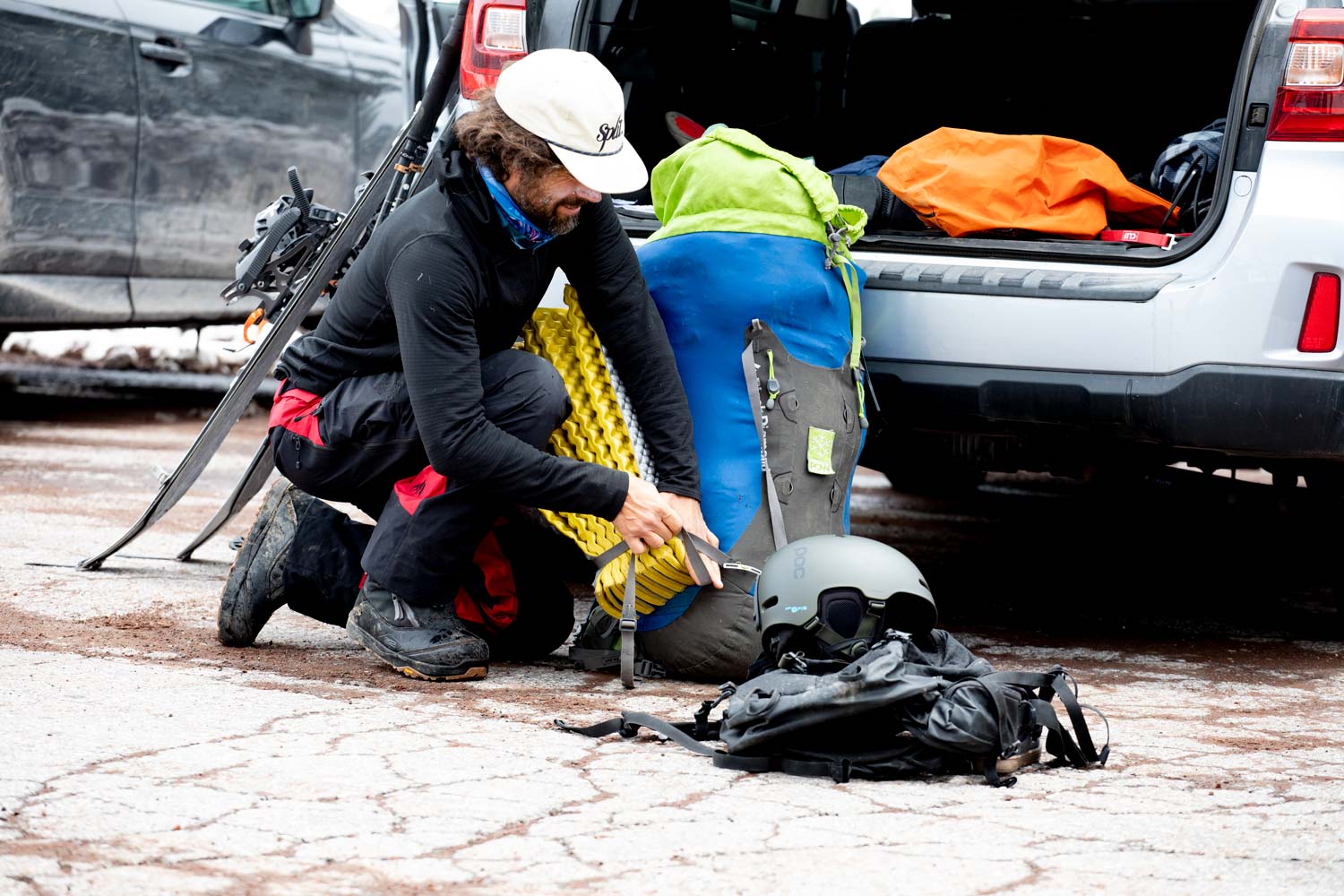
Base layers
The base layer is the first layer you put on. This next-to-skin layer is critical to your all-day comfort as it provides warmth when it’s cold and wicks away sweat when you’re hot or moving. A good base layer should keep your skin dry, as staying dry is the best way to stay warm. If your base layer leaves you feeling cold, sweaty or clammy, you need to rethink your layering system or how you are using your layers.
Base layers generally fall into two categories - lightweight and midweight. Heavyweight base layers exist, but in most cases you’ll be better off sticking with a midweight base layer and using a mid layer or outer layer for extra warmth. Heavyweight base layers do not allow much room for temperature swings or high output before you’ll be sweating.
Lightweight base layers are ideal for warm spring days at the resort or high output backcountry days when you’ll be skinning or bootpacking in mild conditions. Some lightweight base layers also feature a hood to improve the sun protection of the base layer.

Synthetic lightweight base layers like our Recycled Long Sleeve Tech Tee dry quickly so they excel on warm, mild days when some sweating is inevitable. Synthetic fabrics don’t offer much warmth when saturated with sweat though. If the temps drop and your synthetic base layer has not dried, you’ll need to put on a dry mid layer and outer layer to stay warm.
Lightweight wool base layers offer a middle ground that might make you sweat more than synthetic on the warmest days, but the wool offers more warmth when wet than a synthetic fabric. This added warmth can be crucial when you get to the top of a high intensity climb and get hit by a cold biting wind.
Mid layers come in a wide variety of materials, cuts and thicknesses. Fleece shirts, like the Flagship Recycled Grid Fleece or the December Recycled Fleece Shirt, and trim down jackets, like the Ultra Re-Up Down Recycled Jacket, are common mid layers.
Choose between a synthetic or wool midweight base layer by the same criteria as a lightweight base layer. Synthetic layers are generally more breathable and quick drying. Midweight wool layers are generally a little warmer.
Both lightweight and midweight base layers should be worn fairly trim to the body. Whether you like your base layers tight fitting or slightly loose is a personal preference, but a base layer will have a hard time doing its job of keeping you warm and dry if it is too big or baggy. A baggy base layer will also make wearing a trim mid layer or outer layer less comfortable.
Explore base layers

Mid layers
The mid layer is an optional second layer that is worn over the base layer and under the outer layer. The goal of most mid layers is to provide breathable additional warmth, not protection from the elements. On warm sunny days it is often possible to shred comfortably with your mid layer as your outer layer, however, provided you’re not rolling around in the snow a lot.
Mid layers come in a wide variety of materials, cuts and thicknesses. Fleece shirts, like the Jones December Recycled Fleece Shirt, and trim cut down jackets, like the Jones Ultra Re-Up Down Recycled Jacket, are common mid layers.
Wearing a base layer, a light fleece and a shell jacket is a great layering system for riding at the resort on a cool day. If it’s a notably cold day at the resort, exchange the fleece shirt for a down puffy, and if it’s a ridiculously cold day, or you generally run cold, you may need to wear two mid layers.
Layering three layers under your outer layer, so four layers total, will usually offer very little breathability and may impede your flexibility, however. For resort riding it’s often a better option to wear one warmer mid layer, like a down puffy, or a warmer insulated outer layer, than two light mid layers and a lightweight outer layer.

On a warm day at the resort, leave the mid layer in the car. Riding lifts in just a base layer and an outer layer will be plenty to keep you warm and dry on mild days on the mountain.
When hiking in the backcountry a mid layer can be useful going up and down. On cool days when it’s not snowing, you may find that taking off your outer layer and starting the hike up with just a base layer and a breathable mid layer will be the best solution to keep you from sweating.
On warm storm days, when wearing an outer layer is crucial to keep you dry, you’ll want to shed the mid layer on the way up to keep from overheating. But when you reach the top and start to transition, it may be the time to put that mid layer back on so you stay warm as your body cools on the way down.
Mid layers can also work as transition layers. It’s common practice to slip into a down puffy to stay warm while changing over your splitboard at the top of a run, but then take it off just before dropping in and put on an outer layer for better protection.
On mild days, when a mid layer is not really necessary for warmth going up or down, it’s still a good idea to throw a mid layer in your backcountry pack as a safety precaution. In a rescue scenario, or if you get lost and end up out after dark, carrying an extra mid layer could save you or your partner’s life.
It’s also important to pay attention to how your mid layer fits over your base layer and under your outer layer. Your mid layer should slide over your base layer without bunching and not be so big or baggy that a trim cut outer layer feels restricting.
Explore mid layers
- -30%





- -30%
Men's Ultra Re-Up Down Recycled Jacket
Lightweight, minimalist, packable warmth
- -30%





- -30%
Men's Base Camp Recycled Fleece Jacket
Medium weight mid-layer, versatile, cozy warm
- New model
- -30%





- New model
- -30%
Men's Recycled Fleece Half Zip Pullover
High performance mid layer, casual style
- -30%


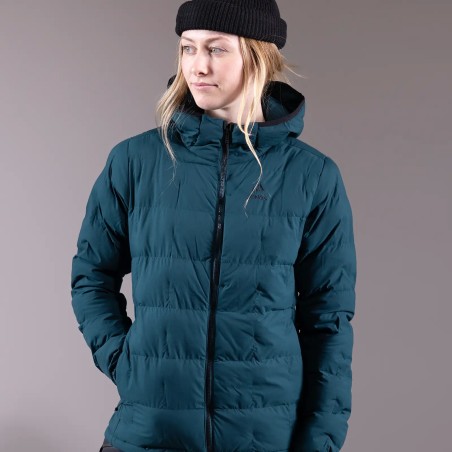


- -30%
Women's Dark Start Recycled Hoodie
Versatile warmth, breathable, supreme comfort
- -30%





- -30%
Women's Flagship Recycled Grid Fleece Pullover
Lightweight mid-layer, warm, comfortable

Outer layers
The outer layer, namely your jacket and pants/bibs, are your protective layers. They are worn over your base layer and mid layer. They act as the first line of defense against wind, rain, snow, and even tree branches. There is not one best outer layer for all weather conditions and riding styles. The best outer layer for a given day will depend on the weather, your expected output level and the snow conditions.
The storm protection and warmth of a given outer layer is determined by the level of waterproofing, insulation and breathability of the fabric the outer layer is made from. When you wear your outer layer, or at least your jacket, is also an important call to make.
If it’s windy, cold, raining or snowing, but of course, wear your jacket to stay dry. But if you are starting a climb and the weather is mild, or even just slightly cold, don’t be afraid to shed the jacket and just wear your base layer or mid layer on ascent. Your jacket is surely the least breathable layer you’re wearing, and as you get moving and warm up, it will make you sweat.

The Shralpinist Collection
The Shralpinist outerwear collection is made for extreme weather conditions where protection from the elements is critical. All of the garments in both the men's and women's Shralpinist Collections are what is called ‘shell outerwear’. They have no added insulation beyond the outer fabric. To stay warm you must layer the proper base layer and mid layer under these shell outer layers.
The Men's Shralpinist GORE-TEX ePE Recycled Jacket and Bibs are made with 100% recycled GORE-TEX ePE fabric that is completely storm proof and 'Guaranteed To Keep You Dry'. The Men's and Women's Shralpinist Stretch Recycled Jacket, Pants and Bibs are made from 100% recycled three-layer 30K waterproof / 30K breathable four-way stretch fabric that’s soft-to-the-touch and offers supreme protection without ever feeling restrictive.
All of the Shralpinist outerwear is built for moving fast in variable weather, and is designed using an origami-inspired fabric pattern that maximizes mobility and breathability by minimizing taped seams that don’t breathe or stretch.
- GORE-TEX
- -30%





- GORE-TEX
- -30%
Men's Shralpinist Recycled GORE-TEX ePE Jacket
Ultimate protection, fully featured, durable
- -30%





- -30%
Men's Shralpinist Stretch Recycled Jacket
Stormproof, versatile, supreme comfort
- GORE-TEX
- -30%

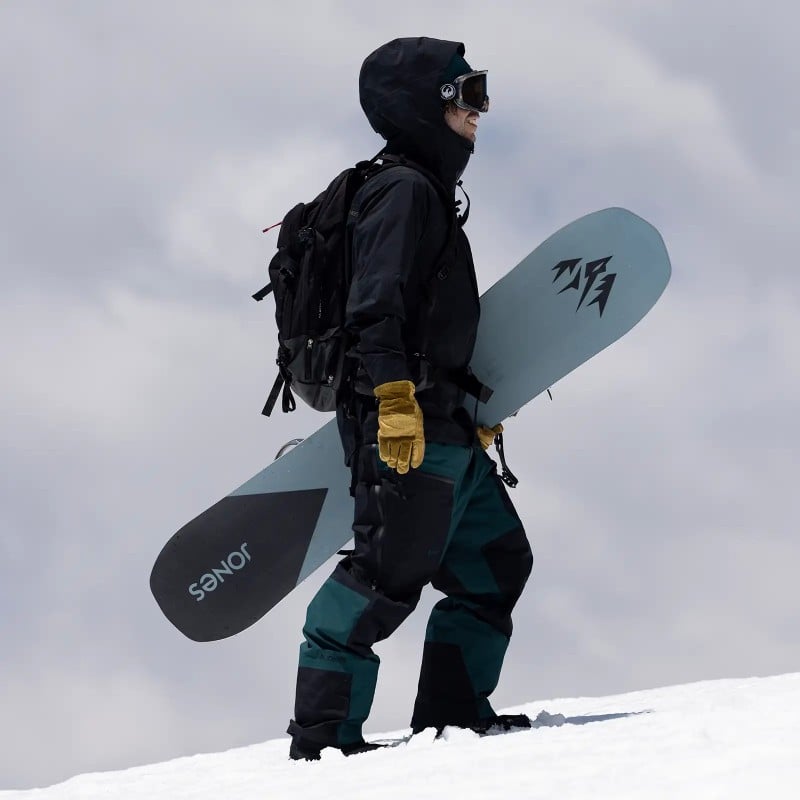



- GORE-TEX
- -30%
Men's Shralpinist Recycled GORE-TEX ePE Bibs
Extreme protection, fully featured, durable
- New model
- -30%

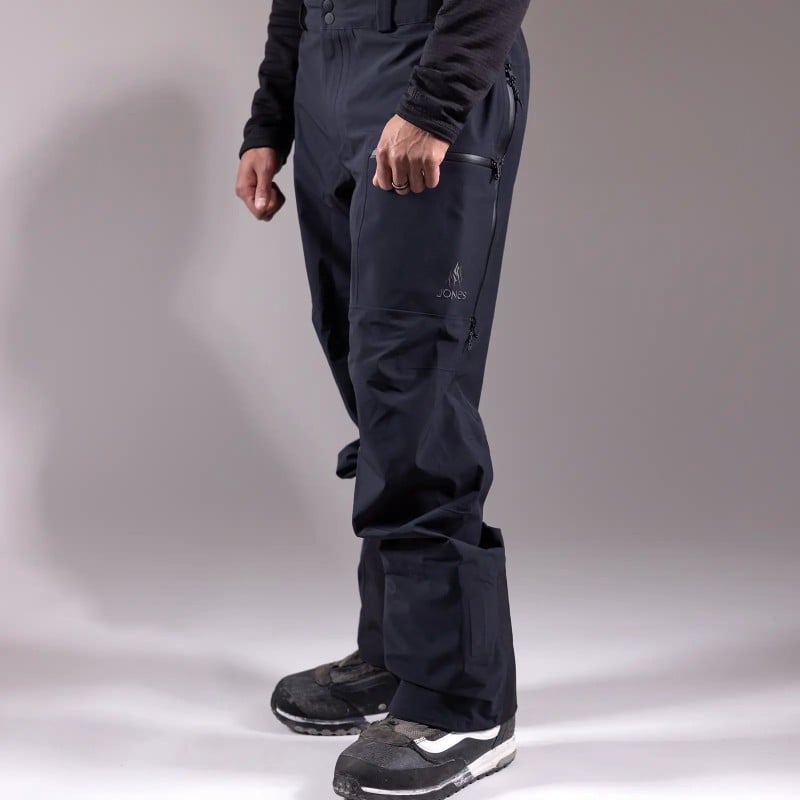



- New model
- -30%
Men's Shralpinist Stretch Recycled Pants
Stormproof, versatile, supreme comfort
- -30%





- -30%
Women's Shralpinist Stretch Recycled Jacket
Stormproof, versatile, supreme comfort
- -30%





- -30%
Women's Shralpinist Stretch Recycled Bibs
Stormproof, versatile, supreme comfort
- -30%





- -30%
Women's Shralpinist Stretch Recycled Pants
Stormproof, versatile, supreme comfort
Keep up with our latest adventures
Keep up with our latest adventures

The MTN Surf Collection
The MTN Surf collection is made with a body mapped combination of 2L fabrics that offer storm protection, comfort and warmth. The hood and arms of the jacket and anorak, and the seat and knees of the pants and bibs are made with 100% recycled 20K waterproof / 20K breathable ripstop fabric for extra abrasion resistance. On the torso of the jacket and anorak, and on the waist and calves of the pants and bibs, a 100% recycled 20K waterproof / 20K breathable 4-way stretch fabric is used for greater breathability and flexibility.
The Men's MTN Surf Parka and Women's MTN Surf Jacket are lightly insulated with Primaloft Pure insulation for added warmth. The added insulation may allow you to skip wearing a mid layer on some days. Or if you live in an especially cold climate, it may be enough warmth to allow you to wear a lighter mid layer. The MTN Surf pants and bibs are lined with 100% recycled polyester that adds a little bit of additional warmth compared to a standard shell pant or bib. The Men's and Women's MTN Surf Anorak and the Men's MTN Surf Shell Jacket are shell jackets and are not lined with any liner fabric or insulation. You must layer with the proper base layer and mid layer under these jackets to stay warm in cold conditions.
- Redesigned
- -40%

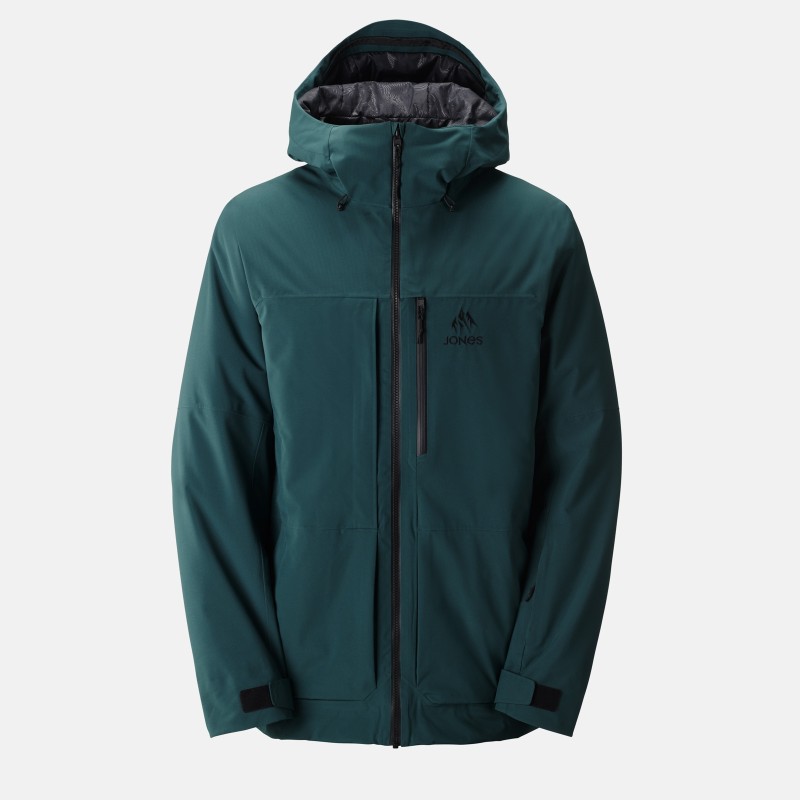



- Redesigned
- -40%
Men's MTN Surf Recycled Insulated Parka
Lightly insulated, comfortable, relaxed fit
- Redesigned
- -40%





- Redesigned
- -40%
Men's MTN Surf Recycled Anorak
Pull over shell, all-conditions, relaxed fit

The Uphill Collection
The Uphill Collection is designed for high output days in the mountains where your outer layer needs to be as breathable as it is waterproof. The unique laminated shell fabric that the Peak Bagger Jacket is made from will fend off a rain or snow storm just as well as it will keep you cool and dry charging up the mountain. This is the jacket you want to wear when splitboarding on variable weather days as it can handle just about anything the mountain may throw at you. Like the Shralpinist jacket, the Peak Bagger is a shell jacket so you must wear the proper base layer and mid layer to stay warm in cold conditions.
The High Sierra Pro Pant and the High Sierra Pant are unlike any other garment in our outerwear collection and are designed for breathability and comfort above all else. Both pants are made with a highly breathable and abrasion resistant fabric that will keep you super cool and dry on mild days. The High Sierra Pro Pant also features 20K waterproof material on the seat and knees that improves the water resistance of the pants in the locations where you most often get wet. The High Sierra Pant does not have this additional material so they will be overall less water resistant.

Learn from experience
Just like anything worth pursuing, practice makes perfect with your layering system. Start conservative with your layering choices to make sure you stay warm, and as you wear your layers and outerwear on different days you will learn which layers perform best together in various weather and mountain scenarios.
An important thing to keep in mind with any layering system you choose is that you can always take off an extra layer, but you can never put on a layer you didn’t bring. Adjust your layers to the weather and your objectives, but for safety’s sake, don’t skimp on layers, especially if you are venturing out deep in the backcountry.
Also note that a couple base/mid layers, and one good set of outer layers, will cover a wide range of weather and mountain pursuits. Don’t stress on trying to change your base layers for micro weather changes or filling your closet with different layers. Invest in the layers that best fit your typical riding habits and climate. You can always add or subtract a layer as the seasons change or you travel to shred in a different climate.
Got more questions about the best Jones layers and outerwear for your riding style or home mountain?

Our Mission
Design innovative mountain gear that sets new performance standards and be a leader
in
manufacturing sustainability, environmental outreach and backcountry education.


© 2025 Jones Snowboards. All rights reserved.
Nidecker North America, 11253 Brockway Rd. Suite E202, Truckee, California 96161 - USA












